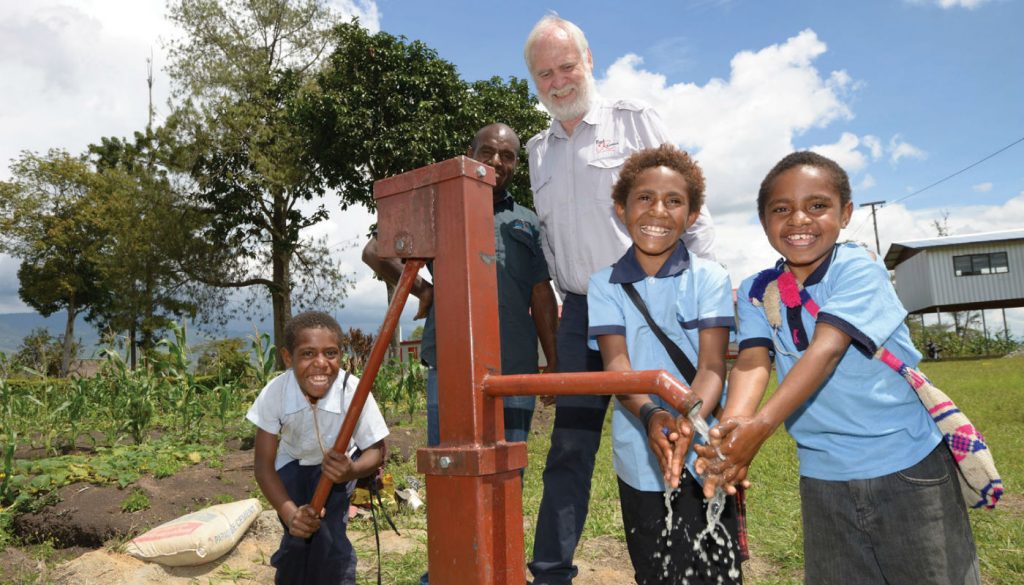The lingering effects of the last El Niño cycle are still being felt in Papua New Guinea, where an Australian engineer is helping provide water and sanitation to some of those who need it most.
Children jumped with joy, clapped and clambered to feel the cool water as it flowed from the newly-installed hand pump at their primary school in the Papua New Guinea highlands of Jiwaka province.
“Just seeing their smiling faces was wonderful. I get such gratification to see hundreds of kids around the bore just waiting for the water to flow. In Australia, you can’t imagine how exciting it is to get a water and sanitation supply like this, as we just take for granted that these will be in our schools,” water and sanitation engineer Charles Knight said from his base in Port Moresby.
Knight is on deployment with the United Nations Children’s Fund (UNICEF) as part of international humanitarian agency RedR Australia’s emergency response to the El Niño-induced drought that has left 162,000 people facing extreme food shortages.
Since arriving in February 2016, Knight has been coordinating the distribution of emergency relief supplies like buckets, jerry cans, tarpaulins and water-purification tablets to the affected areas. He is also project managing the drilling of bore holes and installation of handpumps in eight schools in the remote highlands to ensure a sustainable drinking supply and improve sanitation.
“Last week, I was at Maria Kwin Primary School in Jiwaka province and we installed a pump for drinking purposes. They had two 9000-litre tanks but with 1400 students and 100 teaching staff and their families who live on site, that would run out in a week,” Knight said, adding that the tanks would only be sufficient if it rained once a week.
Drilling of the pump.“At the moment, the students are using open pit latrines, which aren’t very sanitary. They have a toilet block that was built but has been locked because they have no water to flush the latrines into the pits. The local authorities have indicated they will seek funds to reticulate this new bore water across to the latrines so that students will also have better toilets to complement the drinking water we’ve provided.
“Only 13 per cent of Papua New Guinea’s rural population have access to improved sanitation and only 20 per cent have access to improved water, so these kids are lucky.”
Knight is also developing the technical guidelines for government agencies and international NGOS working on infrastructure projects in the water, sanitation and hygiene sector. The guidelines will ensure that minimum standards are adhered to by those who want to improve the local population’s access to water and sanitation following emergencies.



